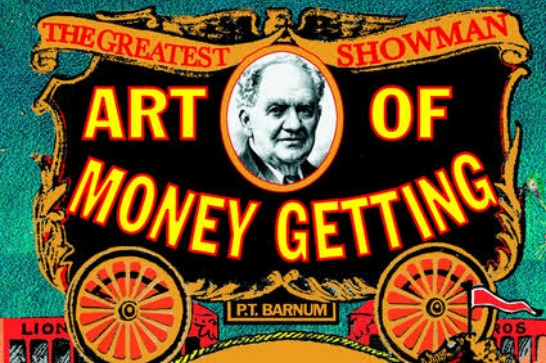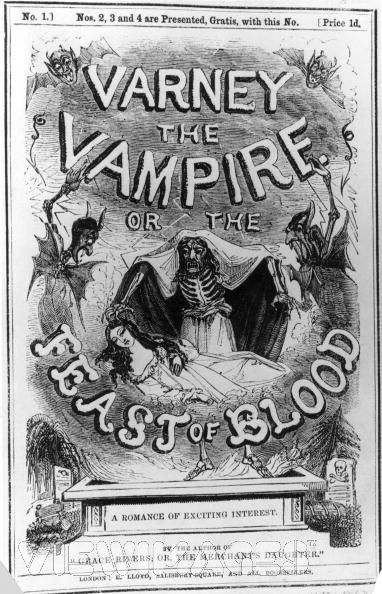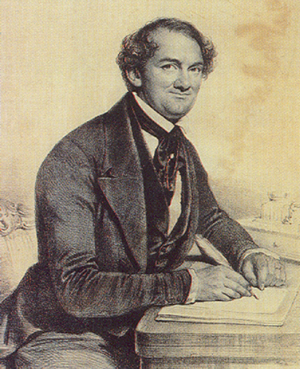P.T. Barnum’s Forgotten Book “The Art of Getting Money” – Ch. 2
We are doing a series here at BBH on The Art of Getting Money a little-know book from P.T. Barnum wrote back in 1880.
Why? A couple reasons. First, because there’s a movie coming out December 25, 2017, starring Hugh Jackman, called The Greatest Showman.
It’s a musical about the life of P.T. Barnum.
I don’t know a lot about the movie yet, but it looks pretty good from what I’ve seen in the trailer…
The Greatest Showman – Official Trailer
P.T. Barnum’s Little-Known Book from 1880
So I thought it’d be cool to feature his little-known book The Art of Money Getting or Golden Rules for Making Money (It’s in the public domain, so it’s ok for me to post it on this site)
Some of you might not know this, but Barnum is FALSELY known for saying, “There’s a sucker born every minute,” (He actually didn’t say that.)
The second reason I thought it would be good to do this is series is because this book contains some surprisingly practical and helpful advice on how everyday people can better manage their income and increase their wealth.
The book is 137 years old, but much of the advice he gives is still applicable to all of us today.
That’s why I’ve decided to post a new segment of the book once a week here on BayBusinessHelp.com.
Today you will be able to read chapter 1 about choosing your vocation (i.e. what you do for a living).
Reminder of 4 Things Before You Read the Book
1. DISCLAIMER:
I don’t agree with everything that P.T. Barnum did during his life.
I also don’t agree with every single thing he wrote in his book.
I don’t even agree that wealth is, or should be, the primary goal in life. (There are plenty things that are more important than wealth!)
But I DO believe that all of us can benefit from learning how to better handle the money (however small or great) that flows in and out of our hands.
And this book contains some advice that I think you will find both interesting and helpful for you when it comes to how to better handle your money.
2. MY ADVICE TO READERS:
Take the good advice and leave the bad!
3. THE ONLY CHANGES I’VE MADE:
The only changes I’ve made to the text are:
- I’ve broke many of the paragraphs into smaller chunks of text to make it easier to read.
- I’ve also bolded or italicized sections of the text to help them stand out to the reader.
- I also occasionally include a modernized word to help the reader understand an old school word or phrase that Barnum uses.
- And I’ve also added some headers to the text, made some quotes stand out, and bulleted some of his points to make sections stand out for the reader.
4. SOME OF IT MIGHT BE OFFENSIVE
Because of the way spoke and thought back in the 1800’s compared to now, you shouldn’t be surprised if some of the content is offensive to our current standards and way of thinking.
If you can’t just ignore this, like I do, and you will be offended, then you probably shouldn’t read any of the posts from this series. 🙂

What We’ve Covered So Far
If you missed the previous posts in this series, you can read them here:
Introduction to The Art of Money Getting
— The Art of Money Getting: Chapter 1–
— The Art of Money Getting: Chapter 2: SELECT THE RIGHT LOCATION —
After securing the right vocation, you must be careful to select the proper location.
You may have been cut out for a hotel keeper, and they say it requires a genius to “know how to keep a hotel.”
You might conduct a hotel like clock-work, and provide satisfactorily for five hundred guests every day; yet, if you should locate your house in a small village where there is no railroad communication or public travel, the location would be your ruin.
It is equally important that you do not commence business where there are already enough to meet all demands in the same occupation.
A Story of How Barnum Saw This Truth Play Out in Real Life

I remember a case which illustrates this subject. When I was in London in 1858, I was passing down Holborn with an English friend and came to the “penny shows.”
They had immense cartoons outside, portraying the wonderful curiosities to be seen “all for a penny.”
Being a little in the “show line” myself, I said “let us go in here.”
We soon found ourselves in the presence of the illustrious showman, and he proved to be the sharpest man in that line I had ever met.
He told us some extraordinary stories in reference to his bearded ladies, his Albinos, and his Armadillos, which we could hardly believe, but thought it “better to believe it than look after the proof’.”
He finally begged to call our attention to some wax statuary, and showed us a lot of the dirtiest and filthiest wax figures imaginable. They looked as if they had not seen water since the Deluge.
“What is there so wonderful about your statuary?” I asked.
“I beg you not to speak so satirically,” he replied, “Sir, these are not Madam Tussaud’s wax figures, all covered with gilt and tinsel and imitation diamonds, and copied from engravings and photographs.
Mine, sir, were taken from life. Whenever you look upon one of those figures, you may consider that you are looking upon the living individual.”
Glancing casually at them, I saw one labeled “Henry VIII,” and feeling a little curious upon seeing that it looked like Calvin Edson, the living skeleton, I said: “Do you call that ‘Henry the Eighth?’”
He replied, “Certainly; sir; it was taken from life at Hampton Court, by special order of his majesty; on such a day.”
He would have given the hour of the day if I had resisted; I said, “Everybody knows that ‘Henry VIII.’ was a great stout old king, and that figure is lean and lank; what do you say to that?”
“Why,” he replied, “you would be lean and lank yourself if you sat there as long as he has.”
There was no resisting such arguments. I said to my English friend, “Let us go out; do not tell him who I am; I show the white feather; he beats me.”
He followed us to the door, and seeing the rabble in the street, he called out, “ladies and gentlemen, I beg to draw your attention to the respectable character of my visitors,” pointing to us as we walked away.
Barnum’s Advice to the Struggling Man

I called upon him a couple of days afterwards; told him who I was, and said: “My friend, you are an excellent showman, but you have selected a bad location.”
He replied, “This is true, sir; I feel that all my talents are thrown away; but what can I do?”
“You can go to America,” I replied. “You can give full play to your faculties over there; you will find plenty of elbowroom in America; I will engage you for two years; after that you will be able to go on your own account.”
He accepted my offer and remained two years in my New York Museum.
He then went to New Orleans and carried on a traveling show business during the summer.
To-day he is worth sixty thousand dollars, simply because he selected the right vocation and also secured the proper location.
The old proverb says, “Three removes are as bad as a fire,” but when a man is in the fire, it matters but little how soon or how often he removes.
— End of Chapter 2 — The Art of Money Getting —
These words might seem simple and they might sound like advice you’ve heard before.
But you need to remember that they were written in 1880.
And that means that you need to realize that Barnum isn’t the one who copied someone else, but maybe all of the people you’ve heard it from got it from the seed of thought he planted 137 years ago!
